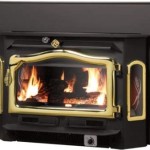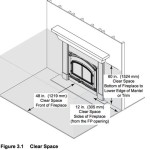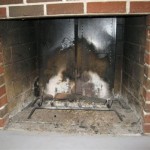Ventless Gas Fireplace with Mantel: Aesthetics and Practicality Combined
A ventless gas fireplace with mantel presents a compelling option for homeowners seeking to introduce the ambiance of a traditional fireplace without the complexities and costs associated with venting systems. These units offer a blend of aesthetic appeal and practical functionality, providing supplemental heat and a visual focal point within a room. The integration of a mantel further enhances the fireplace's decorative value, offering a surface for displaying personal items and complementing the overall décor.
Ventless gas fireplaces, also known as vent-free fireplaces, operate by burning natural gas or propane and releasing the heat directly into the room. This contrasts with vented fireplaces, which require a chimney or flue to exhaust combustion byproducts. The ventless design allows for greater installation flexibility, as these units can be placed against almost any wall without the need for extensive construction or modifications. However, it is crucial to understand the operational principles, safety considerations, and maintenance requirements associated with ventless gas fireplaces to ensure safe and efficient use.
The mantel, typically constructed from wood, stone, or composite materials, serves as both a decorative element and a functional shelf. Its design can range from simple, minimalist styles to elaborate, ornate carvings, allowing homeowners to select a mantel that aligns with their personal preferences and the architectural style of their home. The mantel also provides a degree of heat shielding for the wall above the fireplace, protecting it from potential damage caused by the heat emitted from the unit. The combination of the ventless gas fireplace and mantel creates a complete and visually appealing fireplace setting.
Key Benefit: Installation Flexibility and Cost-Effectiveness
One of the primary advantages of a ventless gas fireplace with mantel is the ease and cost-effectiveness of installation compared to traditional vented fireplaces. The absence of venting requirements significantly reduces the complexity and expense involved in setting up the fireplace. In existing homes, installing a vented fireplace often necessitates the construction of a chimney or the modification of existing venting systems, which can be a costly and disruptive undertaking. Ventless units, however, can be installed with minimal structural alterations, typically requiring only a gas line connection and adherence to local building codes.
This ease of installation translates into lower labor costs and a shorter installation timeframe. Homeowners can often install a ventless gas fireplace with mantel themselves, provided they are comfortable working with gas lines and have a thorough understanding of the manufacturer's instructions and local safety regulations. In cases where professional installation is preferred, the cost is generally substantially lower than that of installing a vented fireplace. This makes ventless gas fireplaces an attractive option for homeowners on a budget or those seeking a quick and simple way to add a fireplace to their home.
Furthermore, the installation flexibility of ventless fireplaces allows for placement in various locations within a home. They are not limited to areas with existing chimneys or flues, offering greater freedom in designing the layout of a room and positioning the fireplace as a focal point. This versatility is particularly beneficial in homes where traditional fireplace installation would be impractical or impossible due to space constraints or structural limitations.
Key Benefit: Aesthetic Appeal and Design Versatility
The visual appeal of a ventless gas fireplace with mantel is another significant advantage. The combination of realistic-looking flames and a decorative mantel creates a warm and inviting atmosphere in any room. Modern ventless gas fireplaces are designed to mimic the look of traditional wood-burning fireplaces, with realistic log sets, glowing embers, and adjustable flame heights. This allows homeowners to enjoy the ambiance of a fire without the mess and hassle of wood.
The mantel itself provides a platform for personalization and customization. It can be decorated with family photos, artwork, candles, or other decorative items, reflecting the homeowner's personal style and creating a unique focal point in the room. The design of the mantel can also be chosen to complement the existing décor of the home, whether it is modern, traditional, rustic, or contemporary. A wide variety of mantel styles and materials are available, allowing homeowners to find the perfect match for their taste and budget.
Beyond the aesthetic benefits, the presence of a fireplace with mantel can increase the perceived value of a home. A well-designed and properly installed fireplace can enhance the overall appeal of a room and create a sense of warmth and comfort. This can be particularly attractive to potential buyers, making a ventless gas fireplace with mantel a worthwhile investment for homeowners looking to improve their property's resale value.
Key Benefit: Supplemental Heating and Energy Efficiency
Ventless gas fireplaces provide a source of supplemental heat, effectively warming a room and reducing reliance on central heating systems. Because they do not require venting, ventless fireplaces are highly efficient, converting nearly 100% of the fuel into usable heat. This contrasts with vented fireplaces, which lose a significant portion of their heat up the chimney or flue. The high efficiency of ventless fireplaces translates into lower energy bills and reduced environmental impact.
The ability to provide supplemental heat makes ventless gas fireplaces particularly useful in heating specific areas of a home, such as living rooms, bedrooms, or basements. This allows homeowners to avoid heating the entire house when only a small area needs warmth, resulting in significant energy savings. Furthermore, ventless fireplaces can be used as a backup heating source during power outages, providing a reliable source of warmth in emergency situations.
While ventless gas fireplaces are efficient, it is important to select a unit that is appropriately sized for the room it is intended to heat. Overly large units can produce excessive heat, leading to discomfort and potentially creating unsafe conditions. Conversely, undersized units may not provide sufficient warmth. Consulting with a qualified HVAC professional can help homeowners determine the appropriate BTU (British Thermal Unit) rating for their needs, ensuring optimal heating performance and energy efficiency.
It is imperative to emphasize the importance of safety considerations when operating a ventless gas fireplace. While these units are designed to burn cleanly and efficiently, they do release combustion byproducts into the room. To mitigate any potential risks, it is essential to follow the manufacturer's instructions carefully and to install a carbon monoxide detector in the vicinity of the fireplace. Regular maintenance, including cleaning the burner and inspecting the unit for any signs of damage, is also crucial for ensuring safe and reliable operation.
Local building codes often include regulations regarding the installation and operation of ventless gas fireplaces. These codes may specify minimum room sizes, ventilation requirements, and other safety precautions. It is important to consult with local authorities and obtain any necessary permits before installing a ventless gas fireplace to ensure compliance with all applicable regulations. Failure to adhere to these regulations can result in fines or other penalties.
Furthermore, it is important to be aware of potential limitations associated with ventless gas fireplaces. Some individuals may be sensitive to the combustion byproducts released by these units, even in small quantities. Individuals with respiratory conditions, such as asthma or COPD, may experience discomfort or adverse health effects. In such cases, vented fireplaces or other heating options may be more suitable. It is always advisable to consult with a healthcare professional if there are any concerns about the potential health effects of using a ventless gas fireplace.
In conclusion, a ventless gas fireplace with mantel offers a compelling combination of aesthetic appeal, practical functionality, and cost-effectiveness. The ease of installation, design versatility, and energy efficiency make these units an attractive option for homeowners seeking to add the warmth and ambiance of a fireplace to their home. However, it is crucial to understand the operational principles, safety considerations, and maintenance requirements associated with ventless gas fireplaces to ensure safe and efficient use. By carefully considering these factors, homeowners can make an informed decision and enjoy the benefits of a ventless gas fireplace with mantel for years to come.
Majestic Vent Free Gas Fireplaces
:max_bytes(150000):strip_icc()/ventless-gas-fireplaces-4160746-hero-f9d4bdcd9bd446eb84406de306f790ba.jpg?strip=all)
How To Pick Out A Ventless Gas Fireplace

Empire Vail 24 Series Gas Fireplace Fine S
Majestic Vent Free Gas Fireplaces

Duluth Forge Dual Fuel Ventless Gas Fireplace 26 000 Btu Remote Control Antique White Finish 170105 The Home Depot

Duluth Forge Full Size Dual Fuel Ventless Gas Fireplace With Mantel Buyersdepot Com

Duluth Forge Dual Fuel Ventless Gas Fireplace 32 000 Btu Remote Control Antique White Finish 170107 The Home Depot

Ventless Gas Fireplace Propane

Duluth Forge Dual Fuel Ventless Gas Fireplace 26 000 Btu Remote Control Chestnut Oak Finish Com

Duluth Forge Dual Fuel Ventless Gas Fireplace With Mantel 32 000 Btu Buyersdepot Com
Related Posts








